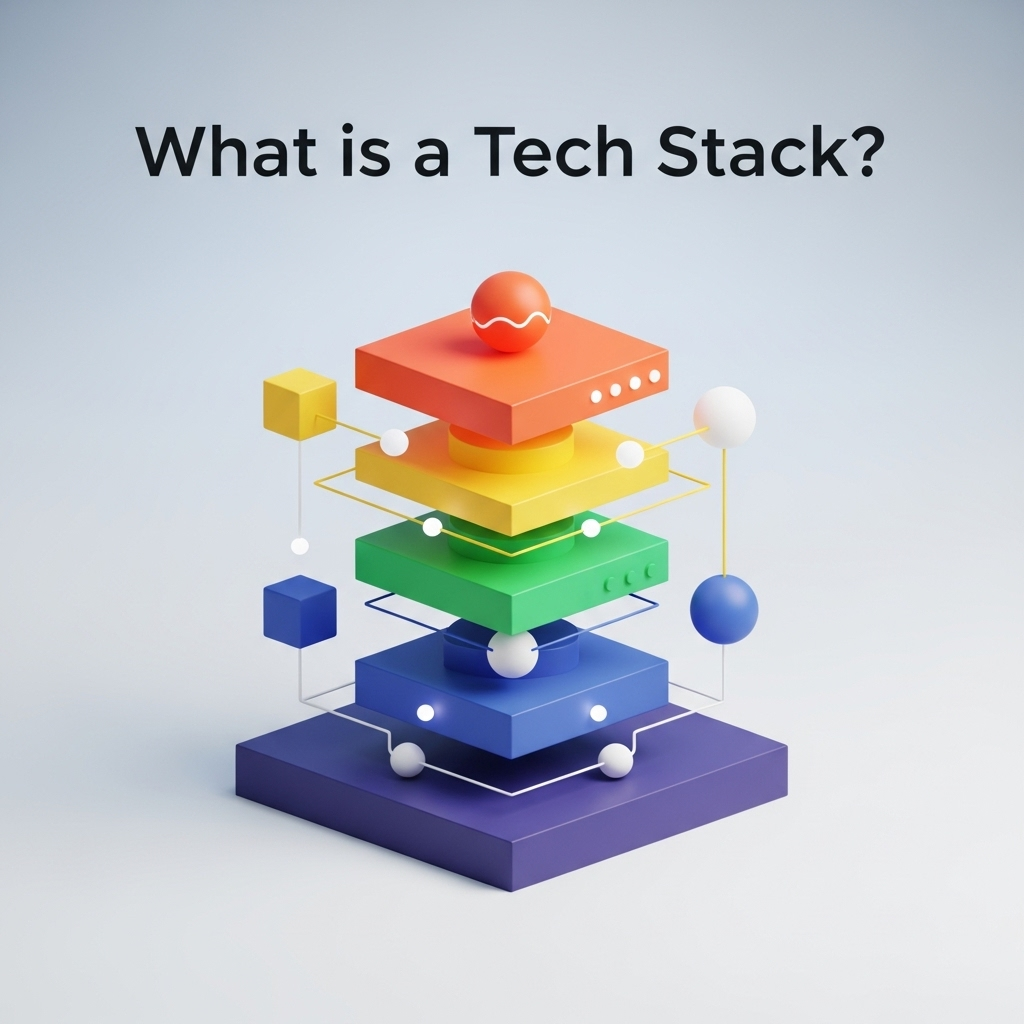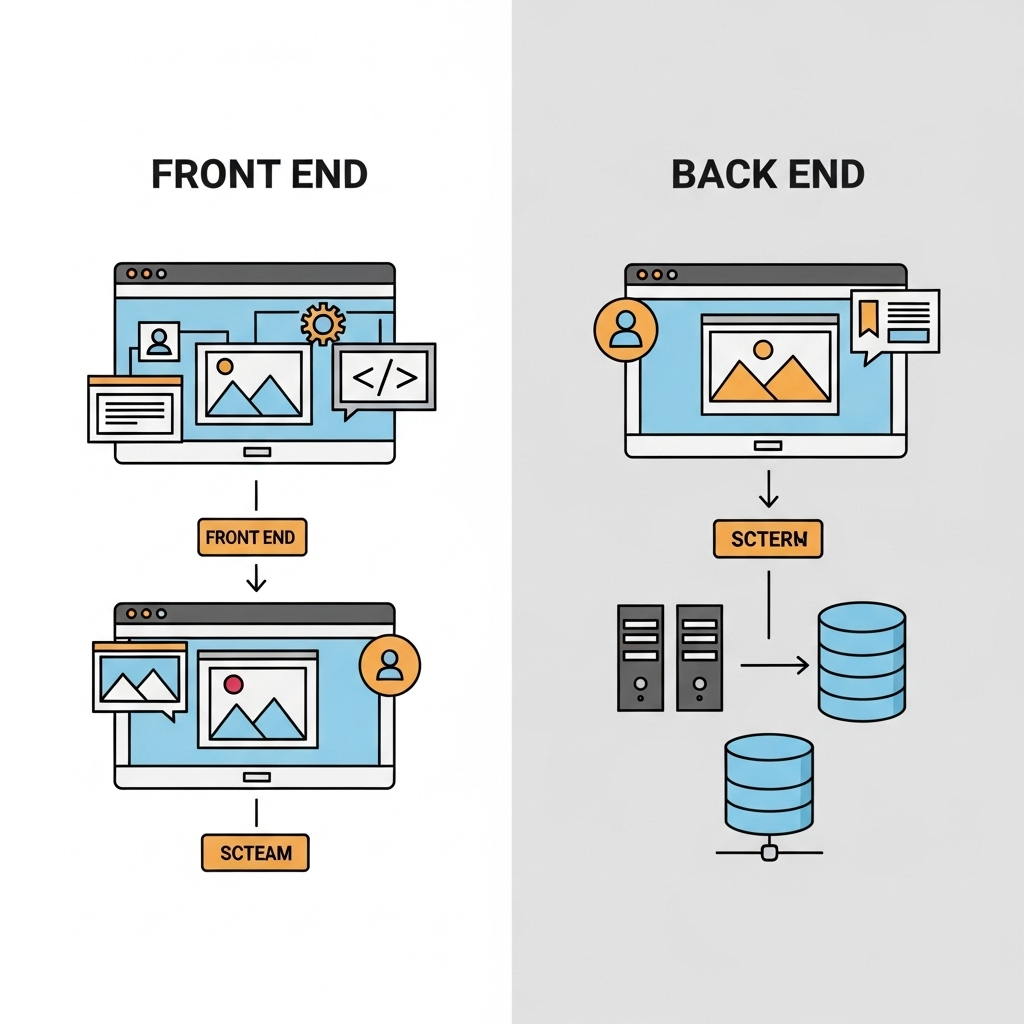Ever wondered what is a tech stack and why people in the digital world keep talking about it? If you’re curious but not a tech expert, you’re in the right place. Let’s break things down in friendly terms so you can feel more confident, whether you’re launching a website or just satisfying your curiosity.
What is a Tech Stack?
A tech stack refers to the collection of tools, programming languages, and technologies that work together to create a digital project, such as a website or a mobile app. Think of it as a recipe—each ingredient (or technology) has a role, and only the right mix delivers the perfect dish. In short, it’s what developers use to build and run software solutions, ensuring they function efficiently and securely.

Why Understanding What is a Tech Stack Matters for Non-Technical People
You might ask, “Why should I care about what is a tech stack?” The answer is simple: knowing the basics helps you make informed decisions. For example, if you’re working with developers to build a website, understanding their tech stack makes conversations smoother. It can also save time and money, as you’ll have a clearer picture of what’s possible and what isn’t. Empathizing with your needs, we recognize not everyone speaks the same tech language; that’s why breaking this down can be so powerful for business owners, managers, or curious learners.
Breaking Down the Tech Stack for Web Development
The tech stack for web development usually includes two main parts: the front end and the back end. The front end is what you see and interact with on your screen—buttons, images, text, colors. The back end handles everything behind the scenes, like databases, security, and how the website responds when you click a button. Some stacks even include a “middle” layer, called middleware, which helps connect everything smoothly.

Common Components Found in a Tech Stack
Let’s look at what usually makes up a complete tech stack:
- Programming Languages: These are the core of any site or app (for instance, HTML, CSS, JavaScript for the front end, or Python, PHP, Ruby for the back end).
- Frameworks: Pre-built collections of code that speed up the creation process (like React or Angular for the front end, and Django or Laravel for the back end).
- Databases: Where information, such as user data, is stored securely (examples include MySQL, PostgreSQL, or MongoDB).
- Servers: Computers that ‘serve’ your website to the world. Cloud providers like AWS, Google Cloud, and Azure are also common choices.
- Middleware: The bridge that connects the front end with the back end and database.
- Other Tools: Things like version control (for example, Git) and container platforms (like Docker) are often parts of a modern tech stack.
For a visual breakdown of components, resources like Codecademy offer excellent guides.
How a Tech Stack Shapes Your Online Experience
The tech stack behind any website or app plays a huge part in how fast it loads, how secure it feels, and how easy it is to use. For example, a robust tech stack for web development ensures your site doesn’t crash during busy periods, your data is kept private, and features work smoothly. Even the most beautiful website can struggle if the underlying stack isn’t reliable. In fact, the combination of technologies chosen impacts everything from mobile responsiveness to search engine visibility.
If you’re interested in how user experiences connect with technology choices, Smashing Magazine explores that topic in greater detail.
Choosing the Right Tech Stack for Web Development: What to Know
Selecting the ideal stack is not a one-size-fits-all situation. The best tech stack for web development depends on your project’s unique needs—your goals, budget, timeline, and how much you expect to grow. For instance, a simple information website may use a different stack than an online store or a social app. Experienced companies like Blanmo help clients pick tech stacks wisely, balancing technical power with project realities. When a trusted partner guides these choices, your end-product will likely be more stable and easier to enhance later on.

Questions to Ask When Discussing a Tech Stack with Developers
You don’t need to memorize all the technical jargon, but asking a few smart questions will help you feel involved. Try these:
- Why did you choose this tech stack for our project?
- Will this stack make it easy to add new features later?
- How does this stack keep my website secure and fast?
- Are there plenty of developers familiar with this stack, in case we need help in the future?
- Is support or troubleshooting well-documented for the technologies in this stack?
Open conversation leads to better cooperation, and it can save both time and effort throughout the process.
The Role of a Tech Stack in Building Trustworthy Websites
Today, security, performance, and reliability are huge when it comes to digital trust. A well-chosen tech stack for web development protects sensitive information, resists online threats, and ensures users can count on your website day in and day out. In fact, even many leading industry standards—like those discussed on the OWASP website—highlight how technology choices directly affect your site’s safety and your brand’s credibility. So, remember that every element of a stack serves a purpose in making your website both strong and trustworthy.
Final Thoughts: Making Sense of Tech Stacks as a Non-Expert
Understanding what is a tech stack isn’t just for developers—it’s for anyone who wants to play a part in creating, launching, or managing a digital product. By learning the basics, you’re empowered to ask better questions and make smarter decisions. Remember, you don’t have to do it alone; strong partners like Blanmo walk alongside you each step of the journey, helping turn your vision into reality with the right technologies.
